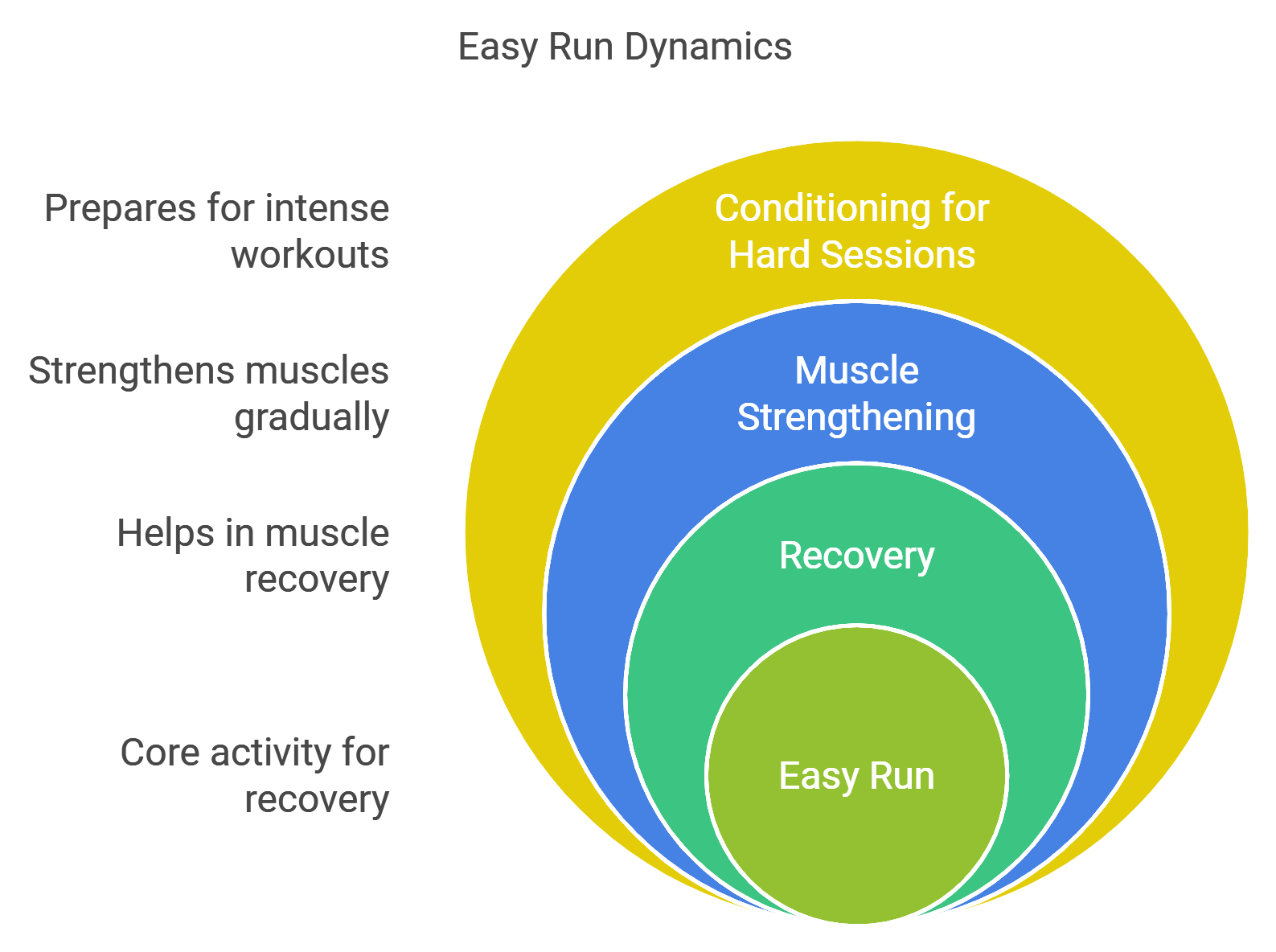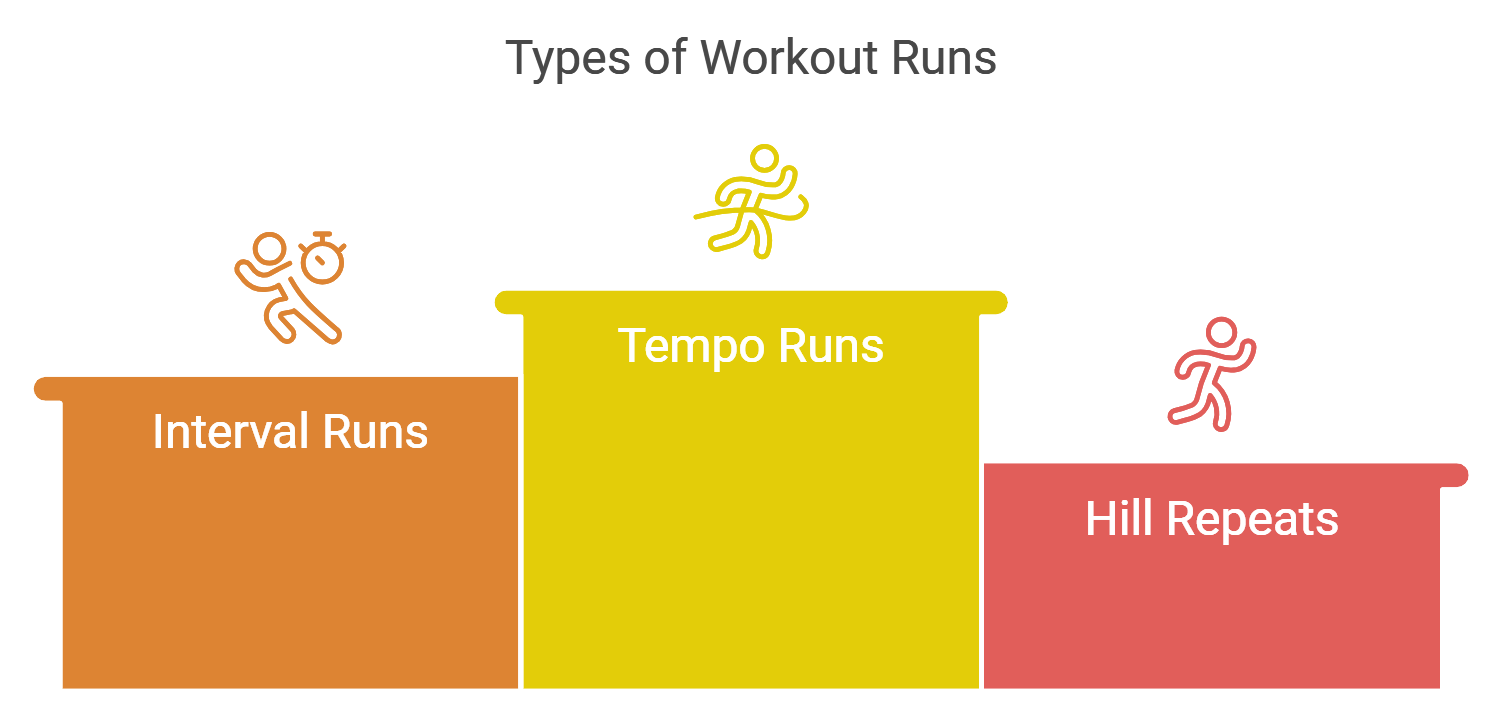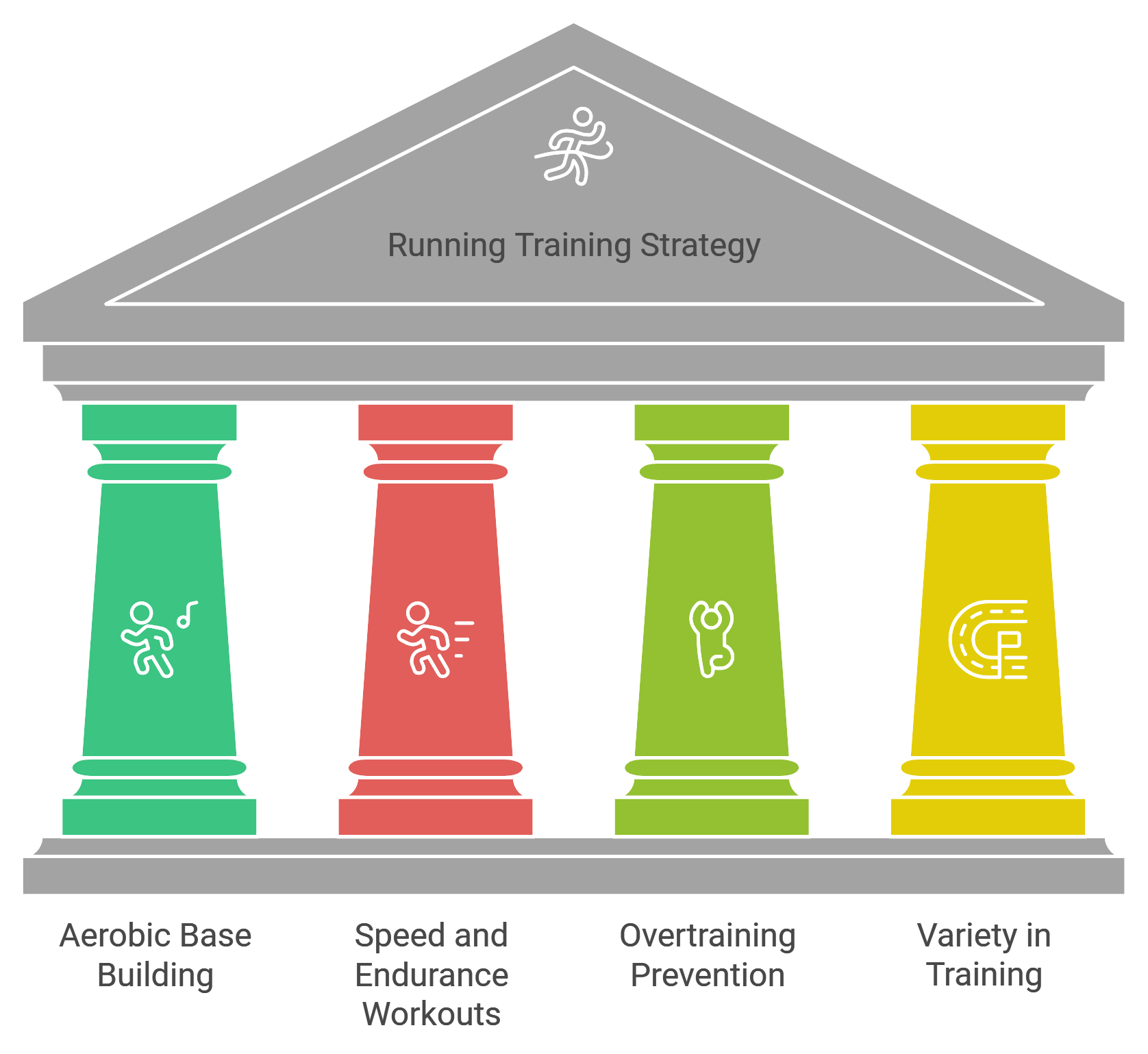Easy runs and workout runs each play a special role in any runner’s journey, from building foundational strength to hitting personal bests. While easy runs focus on recovery and endurance, workout runs target specific performance improvements. Understanding the balance between these types of runs can help you reach your goals faster and with less risk of burnout or injury.
What is an Easy Run?
An easy run is mostly about running slow and steady. It is not a pace where you try to break any limits but go at a slower and comfortable pace for you. You might picture running at a pace where you can talk without huffing and puffing, and that’s your easy run. It’s the time that is designed to help your body recover and give it time to strengthen the muscles, while doing so, keep the muscles moving. Typically, easy runs aren’t as long as the toughest workouts, but they form a mighty part of conditioning your body for the hard sessions down the road.

What is Workout Run?
Easy runs target to push the limits or test your endurance, running speed, strength, among other things, but the workout runs are just too various in terms of intensity and structure. A few types of workout runs include these.
Interval Runs
Alternating bursts of high-intensity running with periods of rest or slower running. It gets you improving your speed and your cardiovascular fitness.
Tempo Runs
Sustained run at an challenging, yet manageable pace. Tempo runs build the body’s ability to handle increased speeds over longer distances without feeling exhausted.
Hill Repeats
What you think you know are just that – repeated sprints up a hill. Hill repeats are great to build up strength and power in your legs.

Progression Run
You start slowly and slowly build up speed in progression runs, instructing your body to stay at such higher speeds as you progress in your runs.
Each run of the workout has its purpose, which may either be building raw speed, boosting endurance, or increasing mental toughness.
The major differences between easy runs and workout runs are:
Key differences between easy runs and workout runs
Intensity and effort
Easy runs are low-stress, allowing steady and consistent movement without exerting much on the body. Workout runs, on the other hand, require more energy and effort.
Purpose and Benefits
Easy runs constitute the accumulation of your aerobic base, with the effects also serving recovery purposes; therefore, it’s ideal in the development of long-lasting endurance. Workouts on the other hand aim at upgrading the running velocity, speed, and power for running economically.
Recovery Needs
Workout runs are strenuous, therefore your body needs more recovery to fix itself and become even better. Easy runs can be run very frequently because easy runs don’t stress out your body much.

Psychological Aspect
Easy runs are psychologically relaxing as it provides an opportunity to have fun running without tension or a struggle; you need focus and preparation well along with mental toughness to hit some targets in workout runs.
The two easy and workout runs benefit a balanced schedule of running. Here is what each kind does:
Aerobic Base Building
The main benefit of easy runs is building an aerobic base-which means the foundation upon which every successful runner’s work is laid down.
These allow your body to breathe easier, increasing oxygen intake; this builds up a high level of endurance in maintaining energy supplies over distance runs.
Developing Speed and Endurance Workout runs, be it interval or tempo run, directly contribute to improving the speed and stamina of a runner.
They become able to run comfortably at greater paces, making their limitations get crossed over on the race day.
Prevent Overtraining-Mixing easy runs with workouts ensures giving your body rest time without having to leave out of the game while remaining active.
This greatly minimizes the chances of getting exhausted and injured hence enabling continuous training.
The mix in having both easy and difficult runs provides variety, meaning that running is not one thing as you will face the tough run and know it was worth it so keep moving and running in due time.

Tips for Balancing Easy and Workout Runs in a Training Plan
The hardest thing about balancing easy runs with workout runs is often finding how to balance the two right. Here’s a pretty simple approach to structuring your week:
Weekly Schedule Suggestions
Try to cram 2-3 easy runs into your week, with 1-2 workout runs mixed in. Perhaps you run Tuesdays at tempo, Thursdays with intervals, and the rest of the days easy runs.
Listen to your body
If you have a really sore or tired period, it may be an indication to add easy runs to your schedule, lest you overwork the muscles.
Adjust according to the Race Distance
Depending on which race distance you’re getting ready for, you’re going to rely more heavily on different types of runs. So, if you are working towards a marathon, there is more reliance on the easy runs, but for someone working toward a sprint distance, they are more relying on speed-based workout runs.

FAQs
Can I substitute easy runs or skip doing them altogether to only do workout runs?
Running completely out of easy runs increases the likelihood of burnout and, in the end, reducing your longterm endurance. They are indeed necessary for steady progress.
How many easy runs are safe to do a week?
Commonly 2-3 easy runs per week may be advisable, but these depend upon your experience levels and how much you work out
Aim for 60-70% of your maximum heart rate when you’re easy running, and maintain an easy, relaxed pace and rhythm.
Are recovery runs just the same as easy runs?
Recovery runs are really similar to easy runs; however, they are performed at an even softer pace than easy runs, often post an especially hard workout.
What’s the best blend between easy and workout runs in a weekly schedule?
Balance them to your goals, like on alternate days, and then set special days for each type. Consistency is the key, along with progressive development.
Conclusion
The best way to build a balanced and resilient body ready for any running challenge is by doing easy and workout runs in your routine. Each type is different, from giving you a solid foundation to hitting new personal bests. Stay consistent, keep listening to your body, and watch how these runs shape you into a stronger, more adaptable runner.

